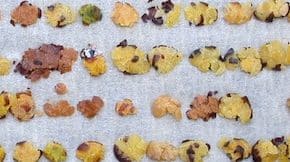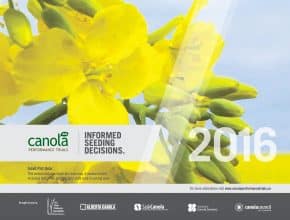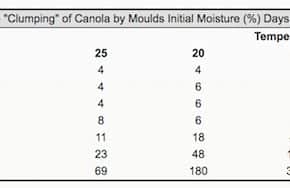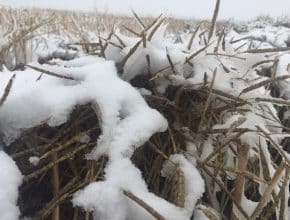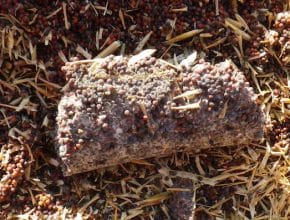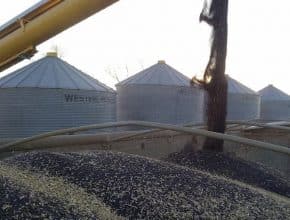Home / Canola Watch / November 9, 2016 - Issue 29
-
Delivery points report a spike in heated canola. Check all canola bins as soon as possible…
-
Small plot data from the 2016 Canola Performance Trials are now available in the searchable database on the CPT website and in the 2016 CPT small plot data booklet!…
-
Weather is finally allowing for some harvest to resume across the Prairies, but the concern now is how to handle canola that could come off very tough, or damp. These steps will help improve conditioning results and reduce risk…
-
Canola harvested in the spring can have lower weights, lower oil content, higher free fatty acids in the oil and more animal excrement in the harvested sample, which could pose significant challenges from a feed safety perspective. Because the degree of yield or quality degradation is difficult to predict and likely depends on conditions, oilseed processors will assess the physical…
-
Canola at moisture levels above 12% should only be stored in bags for three to four weeks, if at all, to avoid deterioration of quality…
-
While the priority is on combining for many canola growers this November, please take time to check the storage situation for canola already harvested…
-
The combination of warm weather and moist soils is almost ideal for losses. Growers may want to reassess the nutrient situation with a time-of-seeding soil test, then top-dress if amounts are less than expected…
-
Given the warm temperatures and moist soil conditions, the ideal time for fall soil samples may still be ahead of us. For results to be as close as possible to the situation next spring, the ideal time to take fall samples is when soil temperatures drop below 10°C and as close to freeze-up as possible…
-
Warm weather has some weeds showing and growing again. If weeds are green, leaf tissue is still relatively pliable and temperatures are relatively warm, growers may still have an opportunity to control perennial and winter annual weeds…

